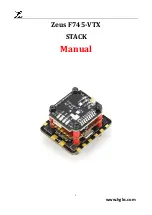
Rev.00 - 06.2021 | MAN PD30CTB IO-Link EN | © 2021 |
CARLO GAVAZZI Industr6
8
EN
2.3. Operating modes
IO-Link photoelectric sensors are provided with two switching outputs (SO) and can operate in two different
modes: SIO mode (standard I/O mode) or IO-Link mode (pin 4).
2.3.1. SIO mode
When the sensor operates in SIO mode (default), a SCTL55 or an O-Link master is not required. The device
works as a standard photoelectric sensor, and it can be operated via a fieldbus device or a controller (e.g. a
PLC) when connected to its PNP, NPN or push-pull digital inputs (standard I/O port). One of the greatest benefits
of these photoelectric sensors is the possibility to configure them via a SCTL55 or an O-Link master and then,
once disconnected from the master, they will keep the last parameter and configuration settings. In this way
it is possible, for example, to configure the outputs of the sensor individually as a PNP, NPN or push-pull, or
to add timer functions such as T-on and T-off delays or logic functions and thereby satisfy several application
requirements with the same sensor.
2.3.2. IO-Link mode
IO-Link is a standardized IO technology that is recognized worldwide as an international standard (IEC 61131-9).
It is today considered to be the “USB interface” for sensors and actuators in the industrial automation environment.
When the sensor is connected to one IO-Link port, the SCTL55 or IO-Link master sends a wakeup request (wake up
pulse) to the sensor, which automatically switches to IO-Link mode: point-to-point bidirectional communication then
starts automatically between the master and the sensor.
IO-Link communication requires only standard 3-wire unshielded cable with a maximum length of 20 m.
1
2 4
3
L+
C/Q
L-
IO-Link
SIO
IO-Link communication takes place with a 24 V pulse modulation, standard UART protocol via the switching and
communication cable (combined switching status and data channel C/Q) PIN 4 or black wire.
For instance, an M8 4-pin male connector has:
• Positive power supply: pin 1, brown
• Negative power supply: pin 3, blue
• Digital output 1: pin 4, black
• Digital output 2: pin 2, white
The transmission rate of PD30CTBxxxBPxxIO sensors is 38.4 kBaud (COM2).
Once connected to the IO-Link port, the master has remote access to all the parameters of the sensor and to
advanced functionalities, allowing the settings and configuration to be changed during operation, and enabling
diagnostic functions, such as temperature warnings, temperature alarms and process data.
Thanks to IO-Link it is possible to see the manufacturer information and part number (Service Data) of the
device connected, starting from V1.1. Thanks to the data storage feature it is possible to replace the device and
automatically have all the information stored in the old device transferred into the replacement unit.









































